What Makes Chefchaouen the Blue City of Morocco?
The Blue City of Morocco, Chefchaouen, is renowned for its mesmerizing blue-washed walls, winding alleys, and tranquil mountain atmosphere. This unique city offers a sensory feast: the cool touch of painted stone, the scent of fresh mountain air, and the gentle play of sunlight on endless shades of blue. Visitors often find themselves enchanted by the harmonious blend of architecture, culture, and history that defines Chefchaouen’s identity.
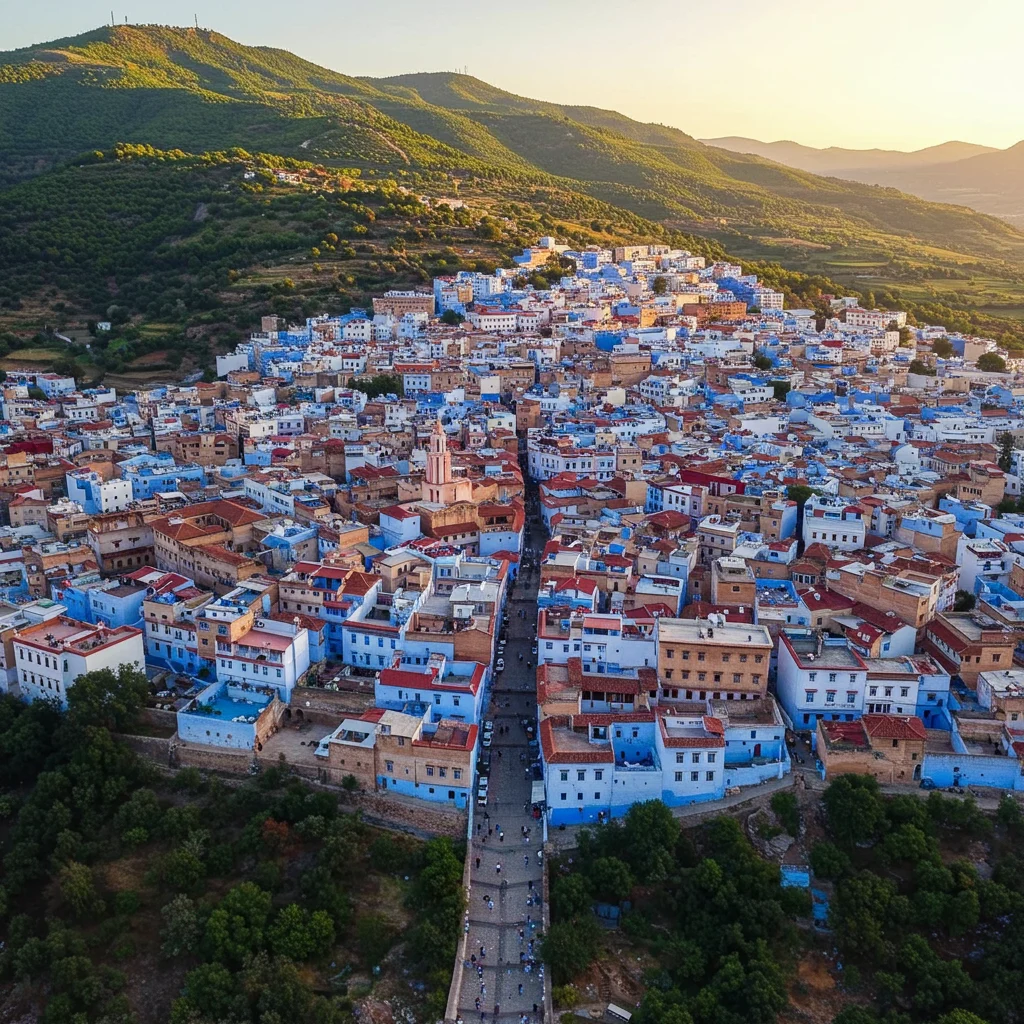
The History Behind Chefchaouen’s Blue Hues
Chefchaouen’s signature blue color dates back to the 15th century when Jewish refugees settled in the city. They introduced the tradition of painting buildings blue as a symbolic gesture, believed to represent the sky and heaven. Over time, this practice became an integral part of the city’s character, influencing not only its buildings but also its sense of peace and serenity.
Why Are the Buildings Painted Blue?
There are several explanations for Chefchaouen’s blue facades. Some locals say the color keeps mosquitoes away, while others believe it reflects light to keep interiors cool during hot summers. The blue also creates a calming effect, inviting both residents and visitors to slow down and appreciate the city’s peaceful rhythm.
Cultural Significance of the Blue Color
Beyond aesthetics, the blue color carries deep meaning. For many, it signifies spirituality, tranquility, and protection. The color blue in Chefchaouen not only beautifies the city but also fosters a sense of community and shared tradition among its inhabitants.
Legends and Myths About Chefchaouen’s Colors
Stories and legends swirl around the origins of Chefchaouen’s blue color. Some tales suggest the blue was intended to confuse invaders, while others attribute it to mystical beliefs about warding off evil spirits. These myths add an air of intrigue, making every stroll through the medina feel like a step into living folklore.
Where Is Chefchaouen Located?
Chefchaouen sits in the heart of Morocco’s Rif Mountains, surrounded by majestic peaks and lush valleys. Its remote location has helped preserve its unique charm, making it a sought-after destination for those eager to experience authentic Moroccan culture away from the bustle of larger cities.

How to Get to Chefchaouen from Major Moroccan Cities
Reaching Chefchaouen requires a bit of planning, but the journey rewards travelers with stunning scenery and anticipation.
Traveling from Tangier
From Tangier, Chefchaouen is approximately a two-hour drive. Shared taxis and regular buses are available, offering affordable and scenic options. The route winds through the Rif Mountains, providing breathtaking vistas along the way.
Traveling from Fes
Travelers coming from Fes can expect a four-hour journey by bus or private car. The drive passes through rural landscapes and small villages, offering glimpses of daily Moroccan life.
Traveling from Casablanca
From Casablanca, the trip to Chefchaouen usually involves a train to Tangier or Fes, followed by a bus or taxi to the city. While it takes longer—typically six to eight hours—the journey is comfortable and allows travelers to see more of Morocco’s diverse regions.
Best Time to Visit Chefchaouen
The ideal time to experience Chefchaouen depends on your preferences for weather, crowd levels, and local events. Each season brings its own character to the city’s blue streets and mountain surroundings.
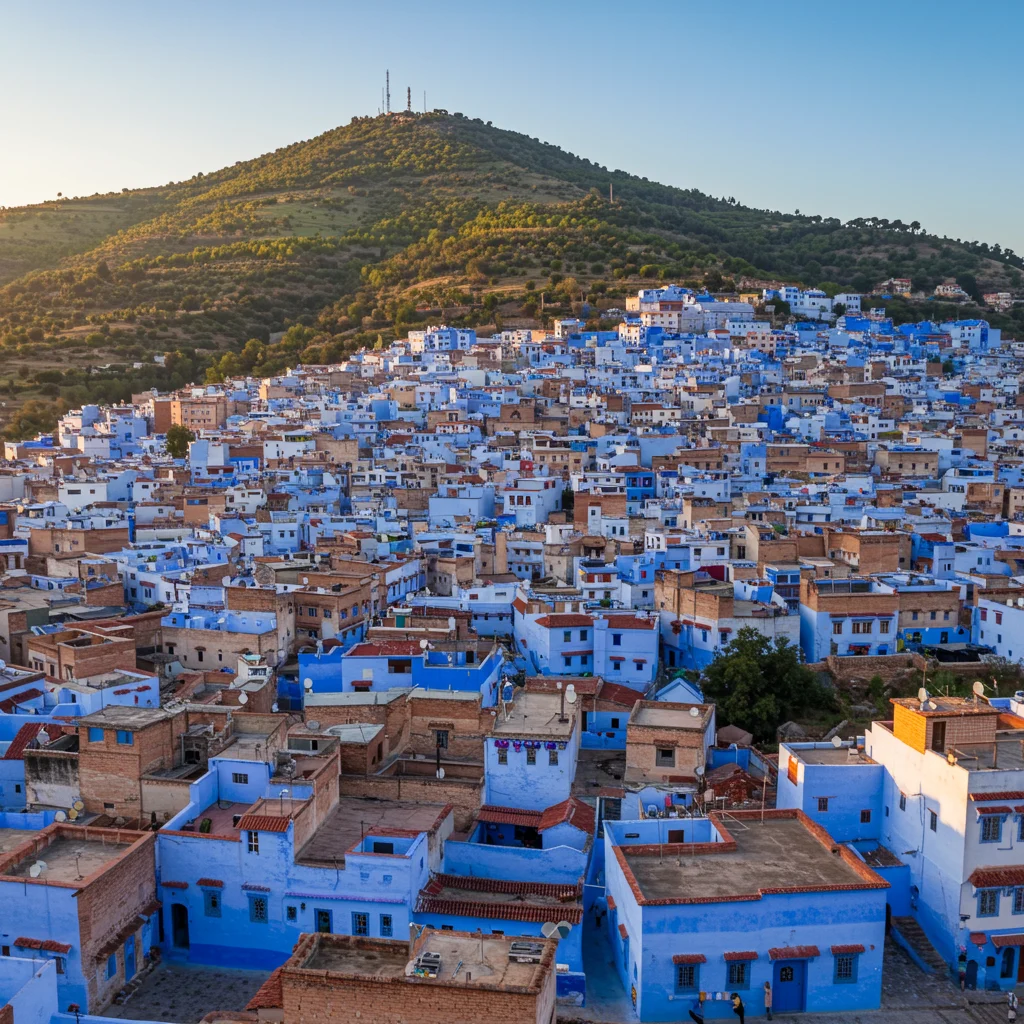
Weather and Climate Overview
Chefchaouen enjoys a Mediterranean climate with mild, wet winters and warm, dry summers. Spring and autumn offer the most pleasant weather, with moderate temperatures and clear skies, perfect for exploring on foot.
Seasonal Events and Festivals
The city hosts various events throughout the year, including religious celebrations and local festivals. These occasions offer insight into the region’s traditions and provide a lively backdrop to the serene blue streets.
How Many Days Should You Spend in Chefchaouen?
We recommend spending at least two days in Chefchaouen to fully appreciate its sights, flavors, and relaxed pace. This allows time to wander the medina, visit nearby natural attractions, and sample local cuisine without feeling rushed.
Top Attractions in Chefchaouen
Chefchaouen’s charm lies in its blend of historic sites, natural wonders, and vibrant street life. Every corner offers a new perspective on the city’s beauty.
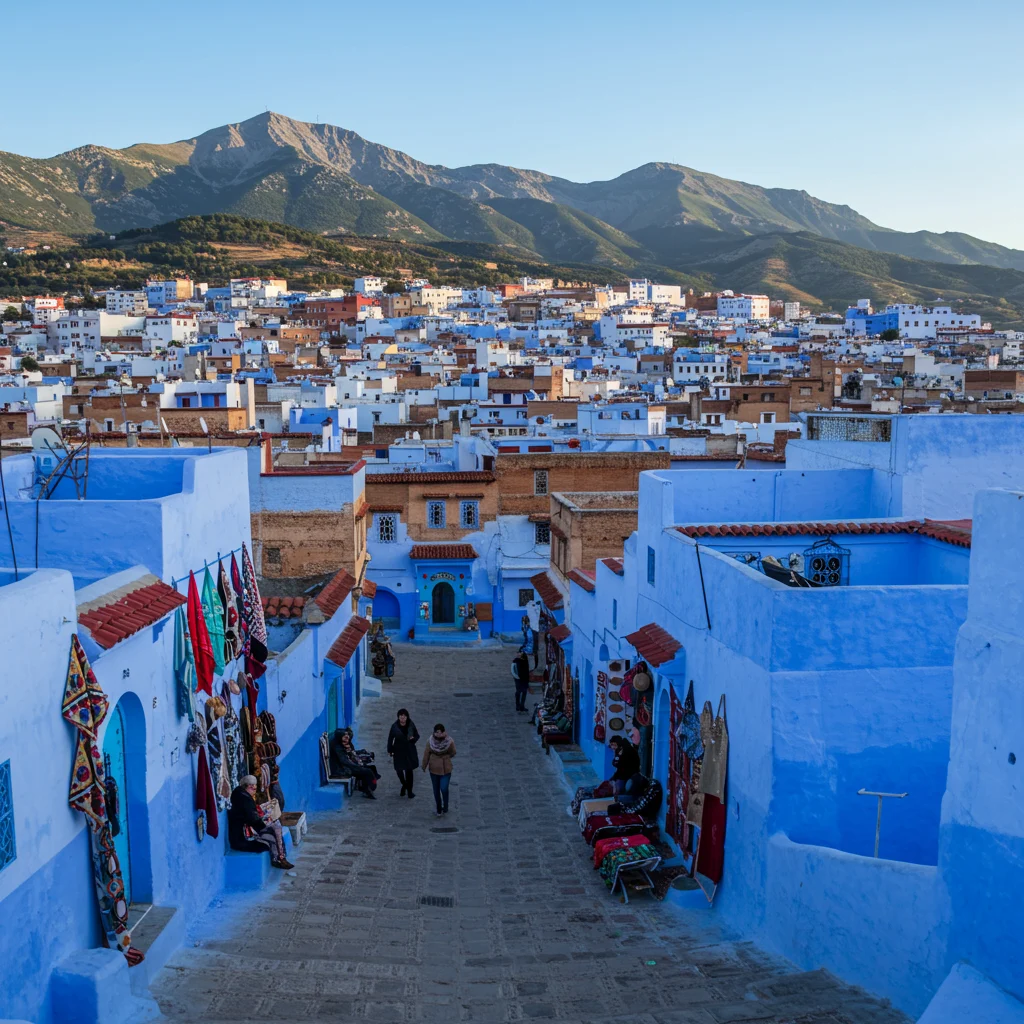
The Medina: Chefchaouen’s Blue Heart
The medina is Chefchaouen’s soul, with its labyrinthine alleys, blue-washed walls, and bustling daily life. Here, the interplay of sunlight and shadow creates an ever-changing palette of blues, inviting photographers and dreamers alike.
Plaza Uta el-Hammam: The City’s Vibrant Center
This lively square is the social heart of Chefchaouen. Cafés and restaurants spill onto the cobblestones, while locals and travelers mingle under the shade of olive trees. The plaza’s energy contrasts beautifully with the peacefulness of the surrounding streets.
The Kasbah: A Glimpse into History
The Kasbah stands as a testament to Chefchaouen’s storied past. Its red walls and shaded gardens offer a quiet retreat, while the small museum inside provides insight into the city’s history and culture.
Grand Mosque of Chefchaouen
The Grand Mosque, with its unique octagonal minaret, is a striking landmark. While non-Muslims cannot enter, the exterior architecture and surrounding atmosphere are worth appreciating during a stroll through the medina.
Ras El Maa Waterfall
Just outside the medina, Ras El Maa offers a refreshing escape. The sound of rushing water and the cool mist provide relief from the midday sun, making it a popular spot for locals and visitors alike.
Spanish Mosque: The Best Panoramic Views
A short hike up the hillside leads to the Spanish Mosque, where sweeping views of Chefchaouen and the surrounding mountains await. Sunset here is especially magical, as the city glows in the golden light.
Akchour Waterfalls and Talassemtane National Park
Nature lovers will find paradise in the nearby Akchour Waterfalls and Talassemtane National Park. These pristine landscapes offer hiking, swimming, and opportunities to connect with Morocco’s wild beauty. For inspiration on outdoor escapes, see our post on unique things to do that break the routine.
Exploring Chefchaouen’s Souks and Markets
The city’s souks brim with color and creativity. From handwoven textiles to aromatic spices, the markets offer a sensory journey through Moroccan craftsmanship and tradition.

What to Buy in Chefchaouen?
Shopping in Chefchaouen is about more than souvenirs; it’s a chance to support local artisans and bring home a piece of the city’s heritage.
Traditional Handicrafts and Artisanal Goods
Look for handwoven blankets, intricate pottery, and beautifully crafted jewelry. Each piece reflects generations of skill and a deep connection to place.
Unique Souvenirs and Where to Find Them
Seek out distinctive items such as blue-dyed scarves, locally made soaps, and traditional slippers. The main souk streets and hidden stalls are treasure troves for thoughtful gifts.
Tips for Bargaining in the Medina
Bargaining is expected in Chefchaouen’s markets. Approach it with patience and good humor, and remember that a respectful negotiation benefits both buyer and seller.
Chefchaouen’s Culinary Delights
Chefchaouen’s cuisine blends Berber, Moroccan, and Andalusian influences, resulting in a rich tapestry of flavors and aromas. Dining here is a memorable experience, whether you savor a slow-cooked tagine or sip mint tea in a sunlit courtyard.
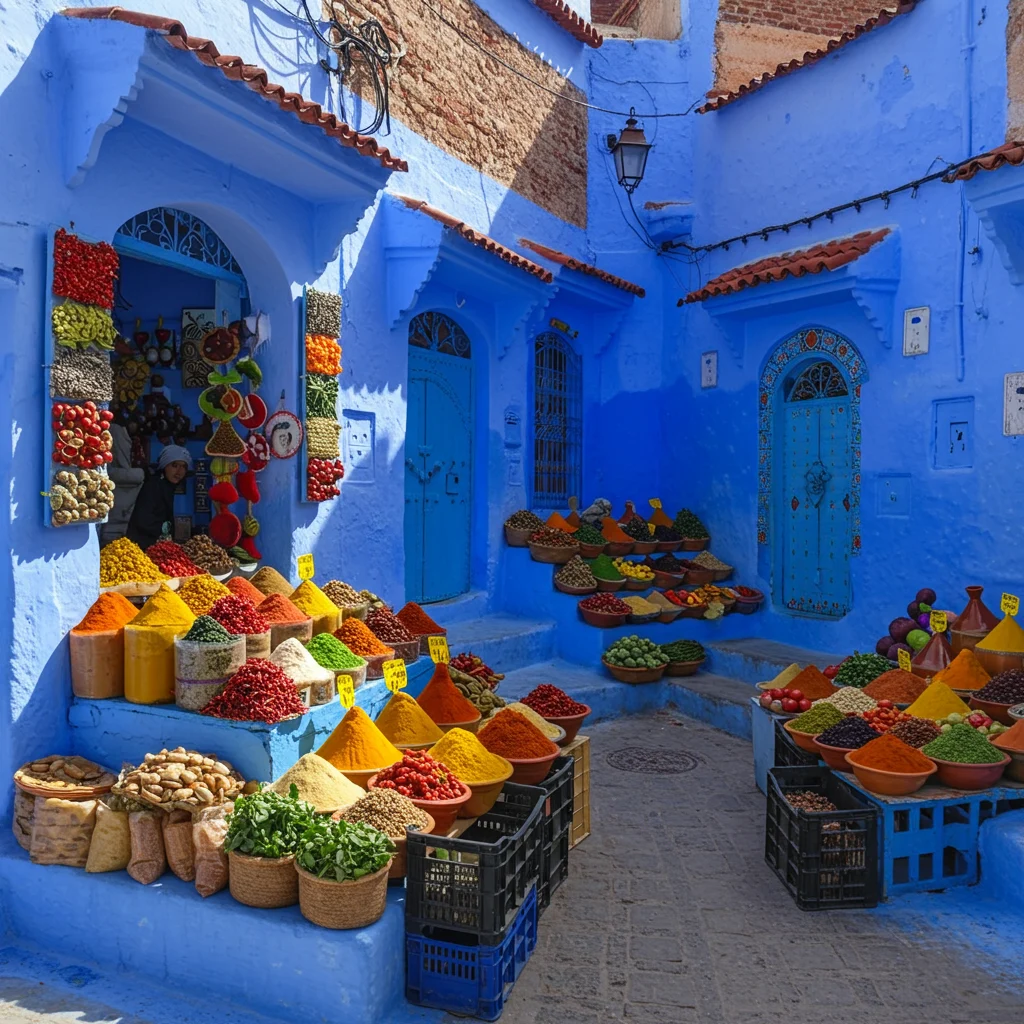
Must-Try Local Dishes
Don’t miss dishes like chicken tagine with olives and lemon, harira soup, and fresh goat cheese. Each bite offers a taste of the region’s agricultural bounty and culinary traditions.
Where to Eat: Best Restaurants and Cafés
Chefchaouen boasts a range of dining options, from rooftop restaurants with mountain views to cozy cafés tucked into the medina’s corners. Look for places that use local ingredients and offer traditional recipes for an authentic experience.
Street Food Experiences
Street stalls serve up delights like msemen (Moroccan pancakes), grilled skewers, and fresh pastries. Sampling these treats is a delicious way to connect with local life.
Vegetarian and Vegan Options in Chefchaouen
Vegetarians and vegans will find plenty of options, including vegetable tagines, lentil stews, and salads featuring seasonal produce. Many restaurants accommodate dietary preferences—just ask for recommendations.
Where to Stay in Chefchaouen
Choosing the right accommodation enhances your experience of Chefchaouen’s blue magic. The city offers a variety of stays, from luxurious riads to budget-friendly hostels, each with its own charm.
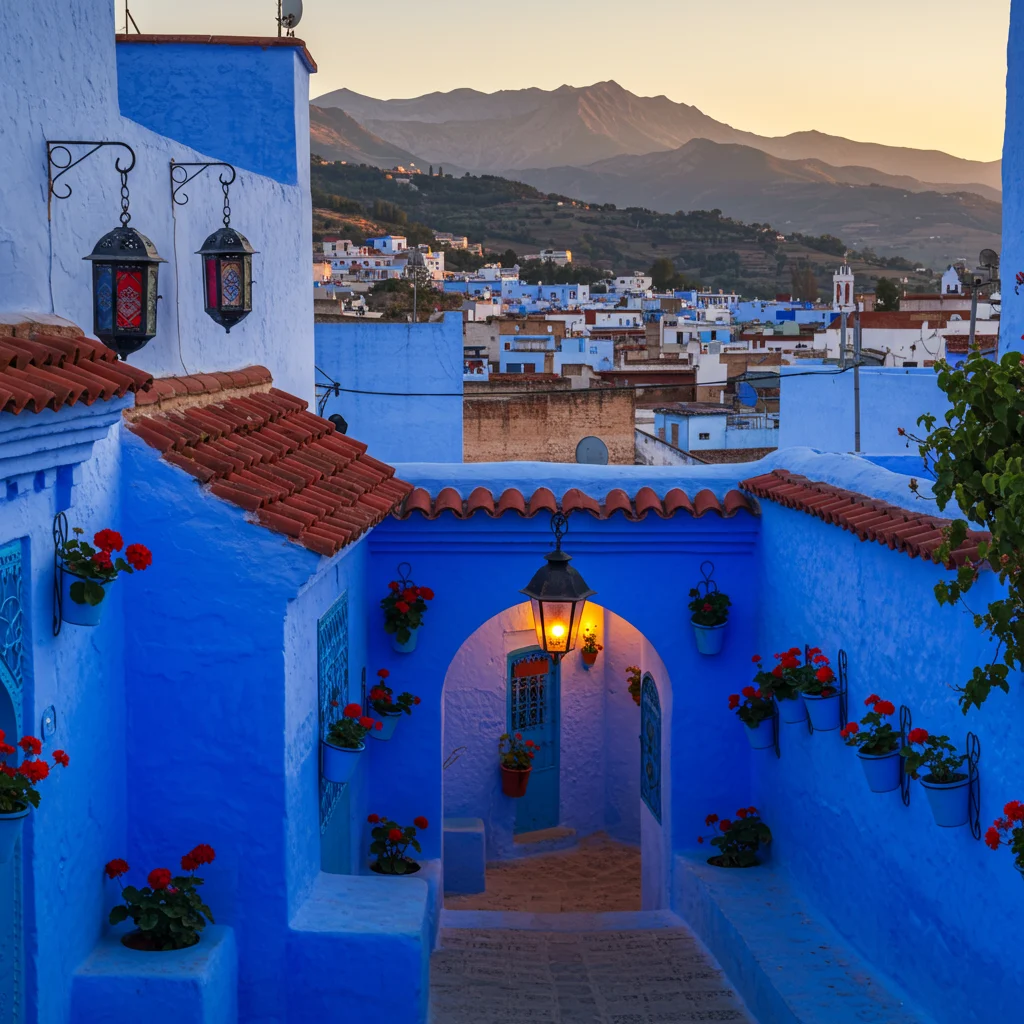
Top Riads and Boutique Hotels
For a memorable stay, consider a traditional riad or boutique hotel. These properties often feature beautiful courtyards, intricate tilework, and personalized service, offering a serene retreat after a day of exploration.
Budget-Friendly Accommodation
Travelers on a budget will find hostels and guesthouses that provide comfort and hospitality at reasonable prices. Many are located near the medina, making it easy to access the city’s main attractions.
Unique Stays: Traditional Guesthouses
For those seeking an authentic experience, traditional guesthouses offer a glimpse into local life. Hosts often share stories, home-cooked meals, and warm hospitality, making your visit truly special.
How to Get Around Chefchaouen
Chefchaouen’s compact layout and pedestrian-friendly streets make it easy to explore on foot. The city’s charm lies in wandering its blue alleys and discovering hidden corners at a leisurely pace.
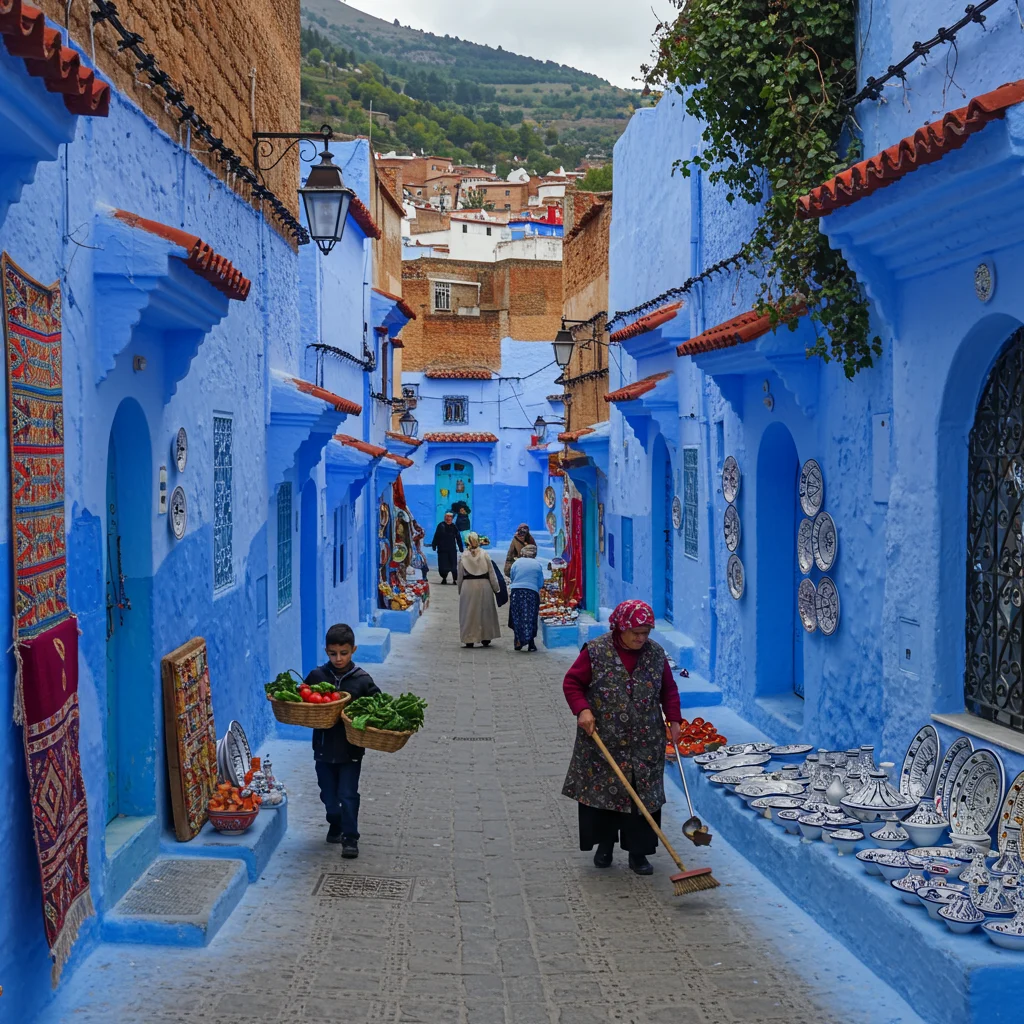
Navigating the Medina’s Narrow Streets
The medina’s narrow, winding lanes can be confusing, but getting lost here is part of the adventure. Landmarks like the Kasbah and main square help with orientation, while friendly locals are always willing to offer directions.
Public Transport and Taxis
While most attractions are within walking distance, taxis are available for trips outside the city center. Public buses connect Chefchaouen to nearby towns and natural sites.
Is Chefchaouen Walkable?
Yes, Chefchaouen is highly walkable. The city’s scale and layout encourage slow travel, allowing visitors to absorb the sights, sounds, and atmosphere at every turn.
Photography Tips: Capturing the Blue City
Chefchaouen is a photographer’s dream, with its vibrant blue walls, colorful doors, and ever-changing light. Capturing the city’s essence requires both creativity and sensitivity.
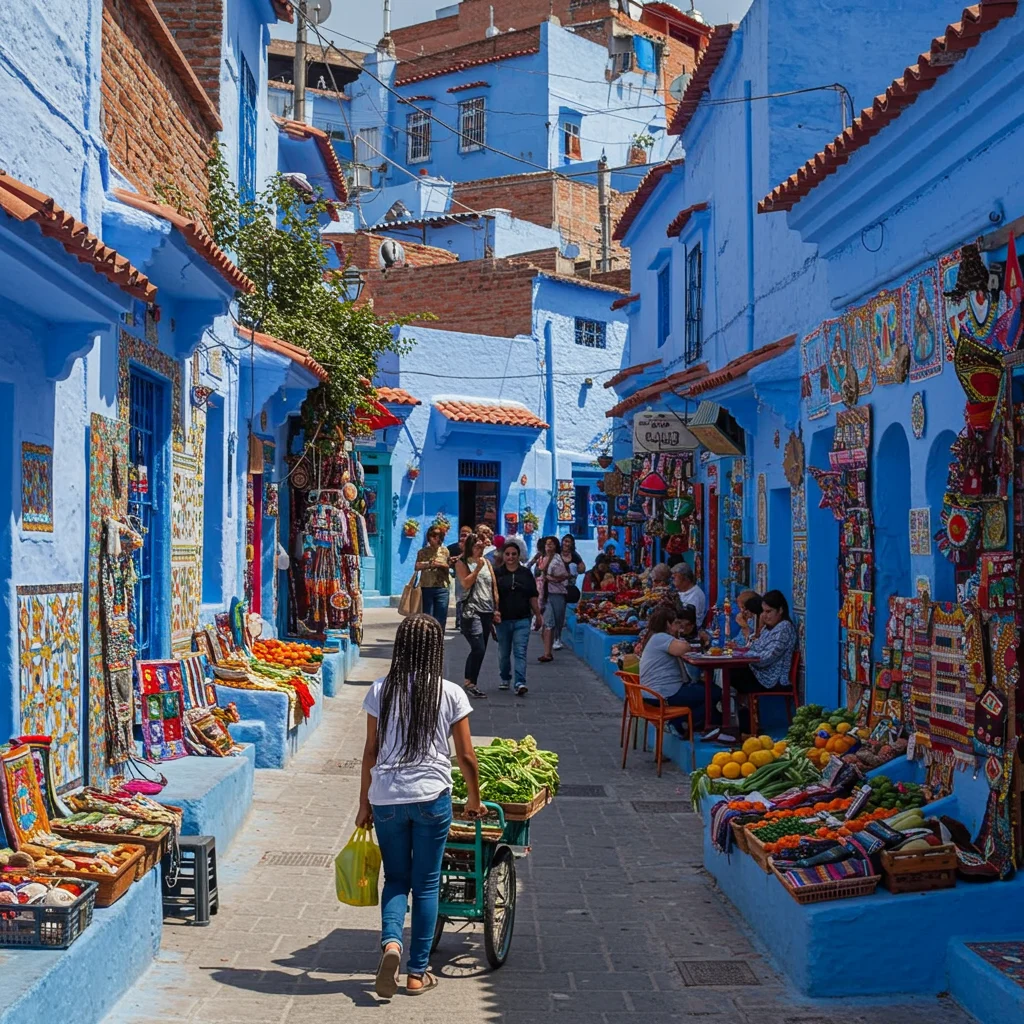
Best Photo Spots in Chefchaouen
Top locations include the medina’s winding alleys, the Spanish Mosque viewpoint, and Ras El Maa. Early morning and late afternoon provide the softest light and the fewest crowds.
Tips for Photographers: Lighting and Timing
For stunning photos, shoot during the golden hours—just after sunrise or before sunset. The interplay of light and shadow highlights the blue hues and creates dramatic contrasts.
How to Respect Local Customs While Taking Photos
Always ask permission before photographing people, especially in private or religious settings. Respecting privacy fosters goodwill and ensures a positive experience for all.
Cultural Etiquette and Local Customs
Understanding local etiquette enriches your visit to Chefchaouen. Simple gestures of respect go a long way in building connections and avoiding misunderstandings.

Dress Code for Visitors
Modest dress is appreciated, particularly in religious or rural areas. Lightweight, loose clothing is both respectful and comfortable in Chefchaouen’s climate.
Religious and Social Norms
Morocco is a predominantly Muslim country. It’s polite to avoid public displays of affection and to observe local customs during prayer times and religious holidays.
How to Interact Respectfully with Locals?
Greet people with a smile and a simple “Salam Alaykum.” Politeness and patience are valued, and showing interest in local culture often leads to warm exchanges.
Safety Tips for Travelers in Chefchaouen
Chefchaouen is considered one of Morocco’s safest cities for travelers. Still, it’s wise to observe standard precautions for a smooth and enjoyable trip.

Is Chefchaouen Safe for Solo Travelers?
Solo travelers, including women, generally feel safe in Chefchaouen. The city’s welcoming atmosphere and small size make it easy to navigate and meet fellow visitors.
Health and Hygiene Considerations
Drink bottled water, wash hands frequently, and choose busy eateries for meals. These simple practices help maintain good health while traveling.
Emergency Contacts and Useful Numbers
Keep a list of local emergency numbers, including police, ambulance, and your accommodation. Staff at hotels and guesthouses are usually happy to assist in case of any issues.
Day Trips and Outdoor Adventures from Chefchaouen
The Rif Mountains surrounding Chefchaouen offer endless opportunities for adventure. From hiking to natural wonders, the region invites exploration and discovery.
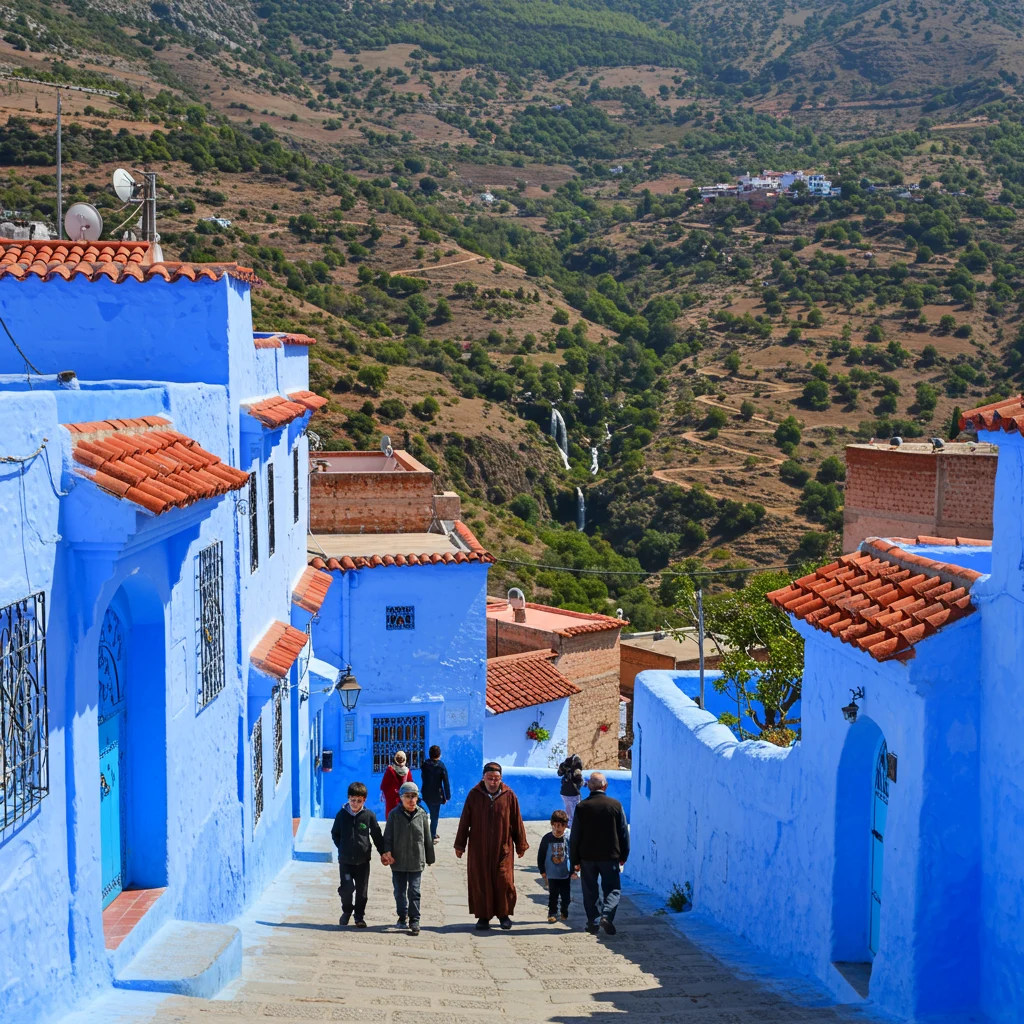
Hiking Trails in the Rif Mountains
Well-marked trails lead through cedar forests, past waterfalls, and up rugged peaks. Local guides can arrange treks tailored to your experience and interests.
Visiting Akchour and the Bridge of God
The Akchour Waterfalls and the impressive rock arch known as the Bridge of God are popular day-trip destinations. The sound of cascading water and the scent of pine trees create an invigorating experience.
Exploring the Talassemtane National Park
Nature lovers will appreciate the biodiversity of Talassemtane National Park, home to rare plants and wildlife. Hiking here offers both challenge and reward, with panoramic views at every turn.
Chefchaouen for Art & Culture Lovers
Chefchaouen is a haven for artists and culture enthusiasts. The city’s creative spirit is reflected in its workshops, galleries, and vibrant street art.
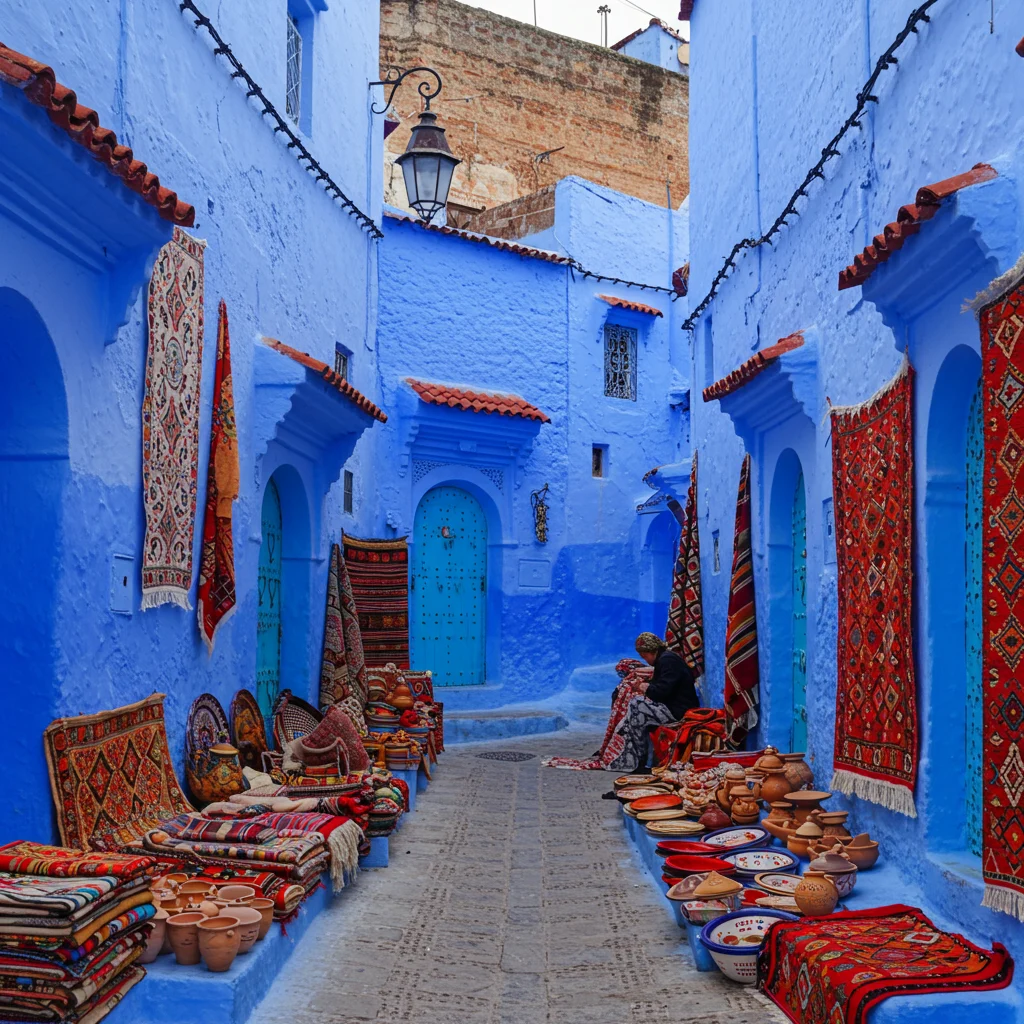
Local Artisans and Workshops
Many artisans open their studios to visitors, offering demonstrations of pottery, weaving, and painting. These encounters provide insight into the city’s artistic traditions and the stories behind each creation.
Museums and Galleries
Small museums and galleries showcase local history, crafts, and contemporary art. Exploring these spaces deepens your appreciation for Chefchaouen’s cultural heritage.
Traditional Music and Festivals
Music is woven into daily life in Chefchaouen. From impromptu street performances to organized festivals, the city pulses with rhythm and melody. As experts often say:
“Art and music are the heartbeat of Chefchaouen, echoing through its blue streets and connecting past and present.”
Shopping Guide: What to Buy in Chefchaouen
Shopping in Chefchaouen is an experience in itself, with every market stall and artisan shop offering a glimpse into Moroccan tradition.

Handwoven Rugs and Textiles
The region is known for its vibrant, handwoven rugs and blankets. These textiles, crafted on traditional looms, make beautiful and functional keepsakes.
Moroccan Leather Goods
Look for finely made leather slippers, bags, and belts. The quality and craftsmanship reflect Chefchaouen’s long-standing artisanal heritage.
Natural Dyes and Spices
Local markets overflow with colorful spices and natural dyes, used both in cooking and textile production. Their rich scents and hues capture the essence of Moroccan daily life.
Travel Planning Tips for Chefchaouen
Thoughtful planning helps maximize your time in Chefchaouen, whether you are on a quick visit or an extended stay.
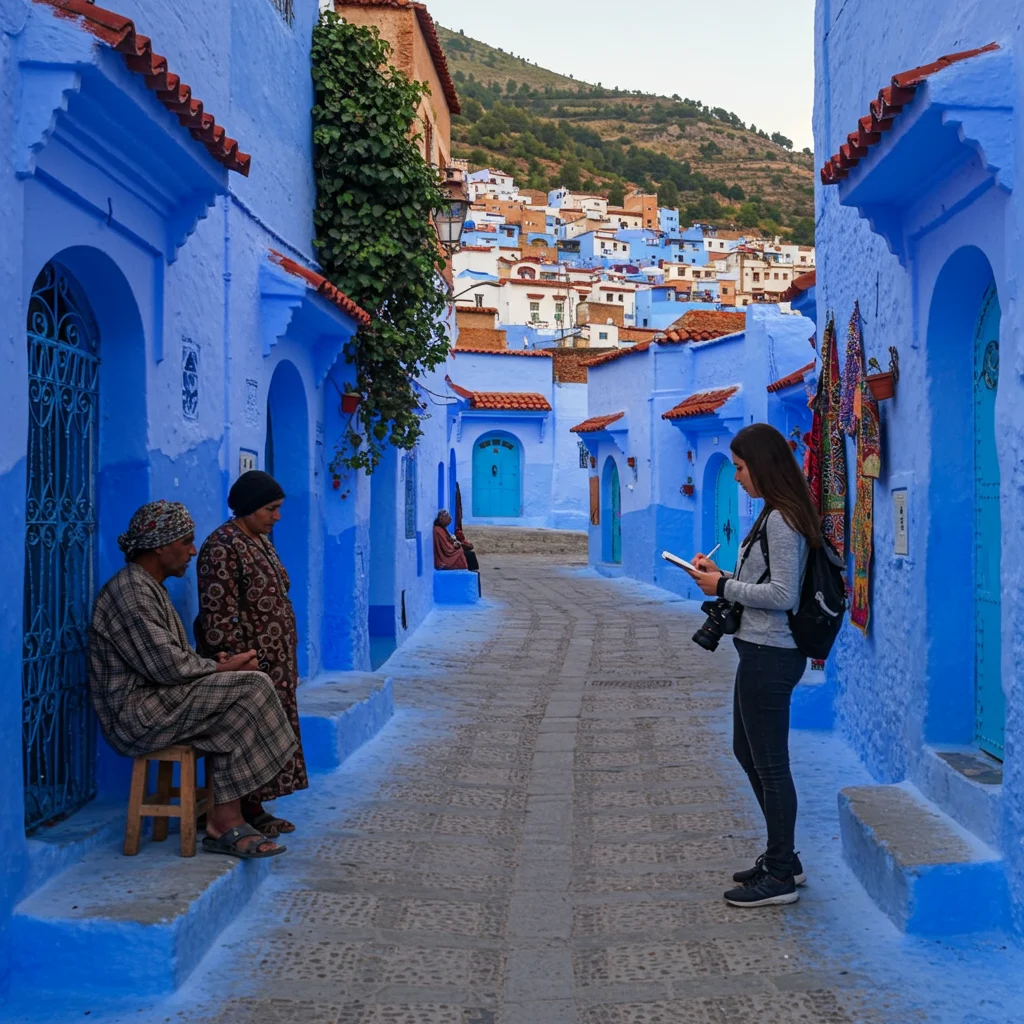
Suggested Itineraries: 1, 2, and 3-Day Visits
For a one-day visit, focus on the medina, Kasbah, and panoramic viewpoints. Two days allow for excursions to Ras El Maa or Akchour, while three days let you immerse yourself in local culture and nature. For further inspiration on planning a week-long cultural trip, see our post on how to spend a week in Rhodes.
Packing Essentials for Chefchaouen
Comfortable walking shoes, modest clothing, a sun hat, and a camera are essential. Don’t forget a reusable water bottle and a light jacket for cooler evenings.
Budgeting for Your Trip
Chefchaouen caters to a range of budgets. Plan for accommodation, meals, local transport, and souvenirs. Bargaining in markets can help stretch your funds further.
Frequently Asked Questions About Chefchaouen
We’ve compiled answers to common questions to help you prepare for your visit to the Blue City.

Is Chefchaouen Worth Visiting?
Absolutely. Chefchaouen offers a unique blend of natural beauty, cultural richness, and warm hospitality that sets it apart from other Moroccan destinations.
Can You Visit Chefchaouen as a Day Trip?
While a day trip is possible from Tangier or Fes, staying overnight allows you to experience the city’s peaceful evenings and early mornings, when the crowds thin and the magic intensifies.
What Languages Are Spoken in Chefchaouen?
Moroccan Arabic and Berber are widely spoken, with many locals also speaking French and some English, especially in tourist areas.
What to Know Before You Go: Insider Tips
Small details can make a big difference in your Chefchaouen experience. These insider tips will help you make the most of your visit.
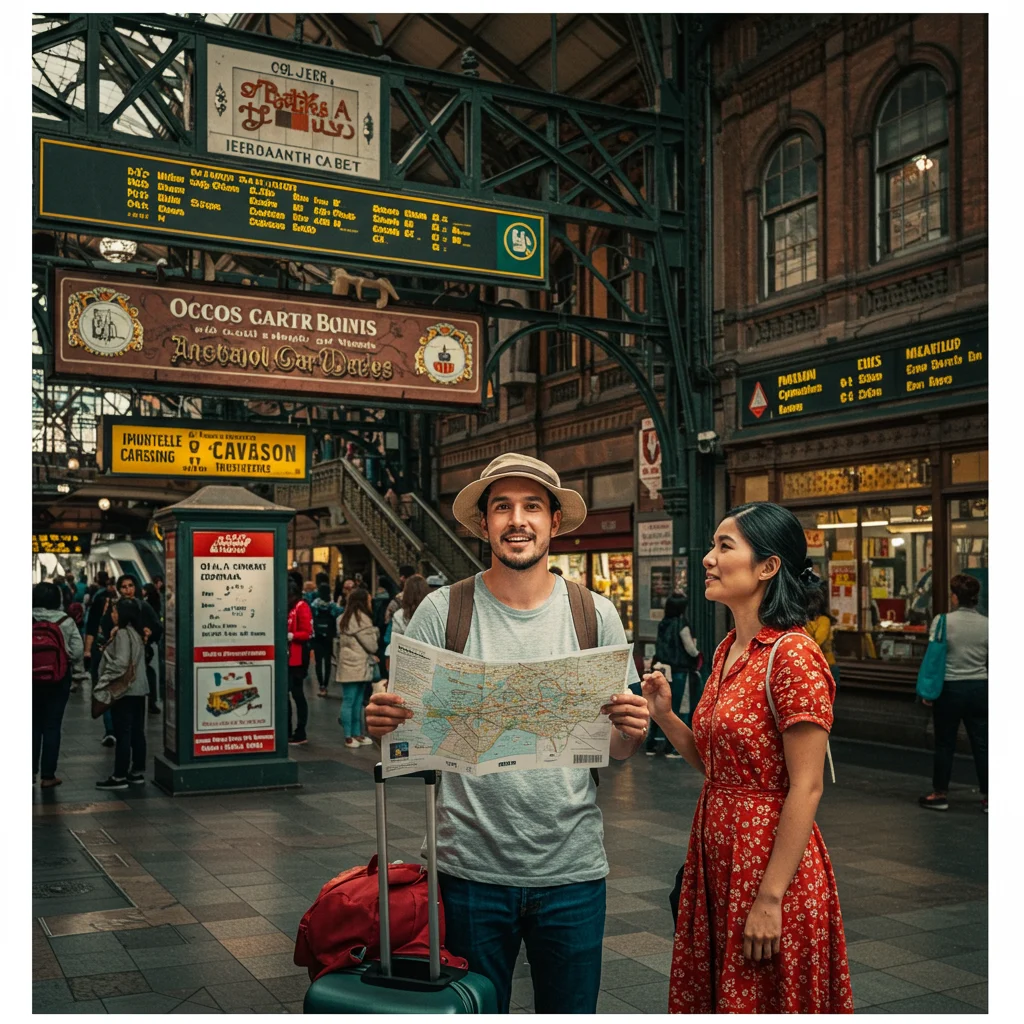
Avoiding Tourist Traps
Seek out family-run restaurants and artisan workshops instead of high-traffic souvenir shops. Engaging with locals leads to more authentic and rewarding experiences.
Best Times for Photography and Sightseeing
Visit popular sites early in the morning or late in the afternoon to enjoy softer light and fewer crowds. This is also when the city’s blue hues are most vibrant.
How to Experience Chefchaouen Like a Local
Take time to sip tea in a local café, join in community events, and greet people you meet. These simple acts foster a deeper connection to the city and its rhythms. For more ideas on blending culture and adventure, you might enjoy our insights on culture and adventure in Santiago, Chile.
Sustainable Tourism in Chefchaouen
We encourage mindful travel that supports Chefchaouen’s environment and communities. Simple choices make a lasting difference for future generations.

Eco-Friendly Accommodation Choices
Choose riads and hotels with sustainable practices, such as water conservation and waste reduction. Many local properties are committed to eco-friendly initiatives.
Supporting Local Communities
Shop at small businesses, eat at family-owned restaurants, and hire local guides. These actions help sustain Chefchaouen’s unique culture and economy.
Responsible Travel Practices
Minimize plastic use, respect wildlife and natural sites, and leave no trace when exploring outdoors. Responsible travel preserves the city’s beauty for all who visit.
Chefchaouen Through the Seasons: What to Expect
Each season brings its own charm to Chefchaouen, transforming the city’s blue palette and the surrounding landscapes in subtle ways.

Spring in Chefchaouen
Spring is marked by mild temperatures and blooming wildflowers. The air is crisp and fresh, making it ideal for outdoor adventures and leisurely walks.
Summer in Chefchaouen
Summer days are warm, but the mountain breeze keeps the city comfortable. Evenings are lively, with locals gathering in plazas and open-air cafés.
Autumn in Chefchaouen
Autumn brings cooler weather and vibrant foliage in the surrounding hills. This is a quieter time, perfect for those seeking a more relaxed pace.
Winter in Chefchaouen
Winters are cool and occasionally rainy, but the city’s blue tones take on a deeper, more mysterious shade. The medina feels especially peaceful, inviting reflection and slow exploration.
Final Thoughts: Embracing the Magic of the Blue City
Chefchaouen’s allure lies in its perfect harmony of color, culture, and mountain serenity. Whether you’re wandering its blue alleys, savoring local cuisine, or connecting with artisans, every moment in the Blue City leaves a lasting impression. For more inspiration and expert travel insights, be sure to visit Nivax Lifestyle. Your journey to Chefchaouen promises not only beauty but also genuine connection—with place, people, and yourself.



